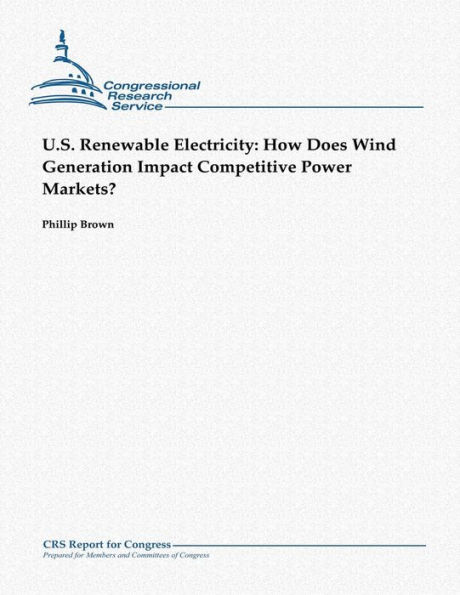U.S. wind power generation has experienced rapid growth in the last 20 years as total installed capacity has increased from 1,500 megawatts (MW) in 1992 to more than 50,000 MW in August of 2012. According to the Energy Information Administration (EIA), wind power provided approximately 3% of total U.S. electricity generation in 2011. Two primary policies provide market and financial incentives that support the wind industry and have contributed to U.S. wind power growth: (1) production tax credit (PTC)-a federal tax incentive of 2.2 cents for each kilowatt-hour (kWh) of electricity produced by a qualified wind project (set to expire for new projects at the end of 2012), and (2) renewable portfolio standards (RPS)-state-level policies that encourage renewable power by requiring that either a certain percentage of electricity be generated by renewable energy sources or a certain amount of qualified renewable electricity capacity be installed. The concentration of wind power projects within competitive power markets managed by regional transmission operators (RTOs), the focus of this report, has resulted in several concerns expressed by power generators and other market participants. Three specific concerns explored in this report include: (1) How might wind power affect wholesale market clearing prices? (2) Does wind power contribute to negative wholesale power price events? and (3) Does wind power impact electric system reliability? These concerns might be considered during congressional debate about the future of wind PTC incentives. When considering the potential impacts of wind power on electric power markets, it is important to recognize that wholesale power markets are both complex and multi-dimensional. Wholesale power markets are influenced by a number of factors, including weather, electricity demand, natural gas prices, transmission constraints, and location. Therefore, determining the direct impact of a single variable, in this case wind power, on the financial economics of power generators can be difficult. In 2012, wholesale electric power prices were down from recent highs in 2008, and lower price trends can result in financial pressure for power generators in RTO markets. Arguably, however, the two primary contributors to this decline are low natural gas prices and low electricity demand. Wind power generation can potentially reduce wholesale electricity prices, in certain locations and during certain seasons and times of day, since wind typically bids a zero ($0.00) price into wholesale power markets. Additionally, independent market monitor reports for three different RTOs each indicate that wind generators will sometimes bid a negative wholesale price in order to ensure electricity dispatch. The ability of wind generators to bid negatively priced power is generally attributed to value associated with PTC incentives and the ability to sell renewable energy credits (REC). However, wholesale power price reductions and negative electricity prices associated with wind generation need to be considered in context with other dimensions of organized power markets. The absolute impact of wind electricity on the economics of power generators is difficult to determine due to the many variables and dimensions that influence wholesale power markets. With regard to how wind power might impact electricity system reliability, two aspects of reliability are typically discussed: (1) impacts to system operations-the ability of the power system to manage the variable and sometimes unpredictable nature of wind power production, and (2) resource adequacy and capacity margins-the potential for wind power generation to either influence power plant retirements or contribute to market conditions that do not support investment in new capacity resources.



